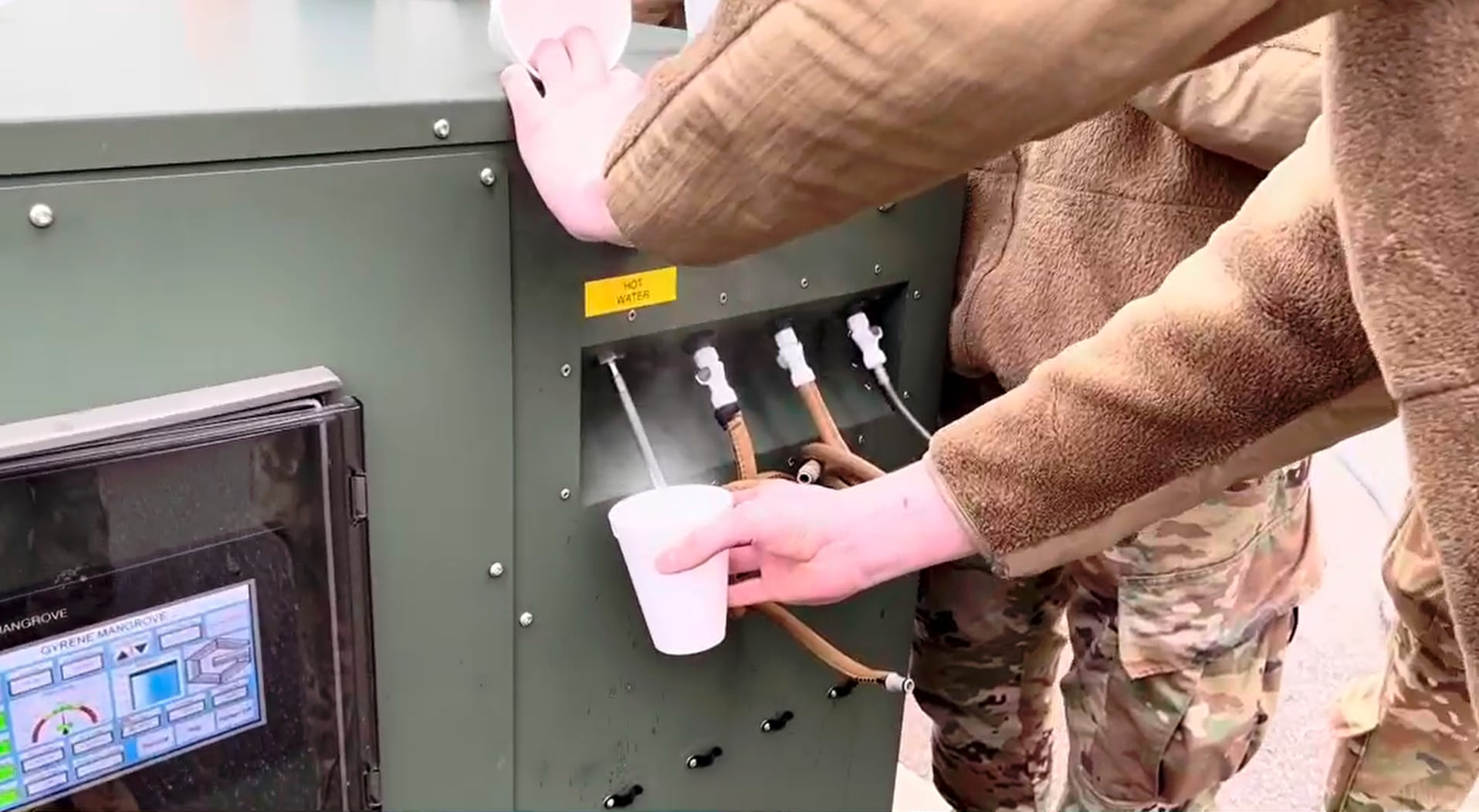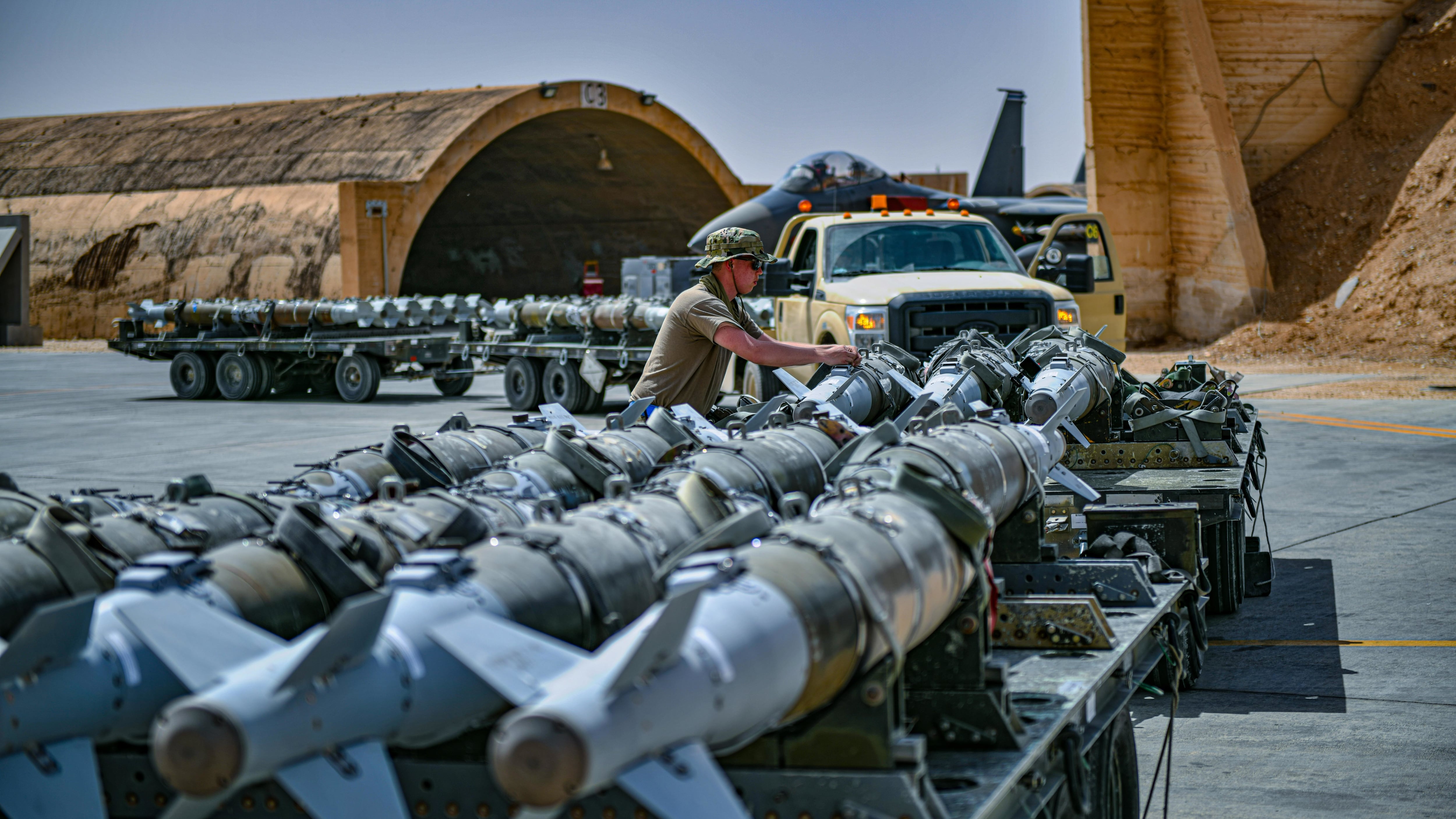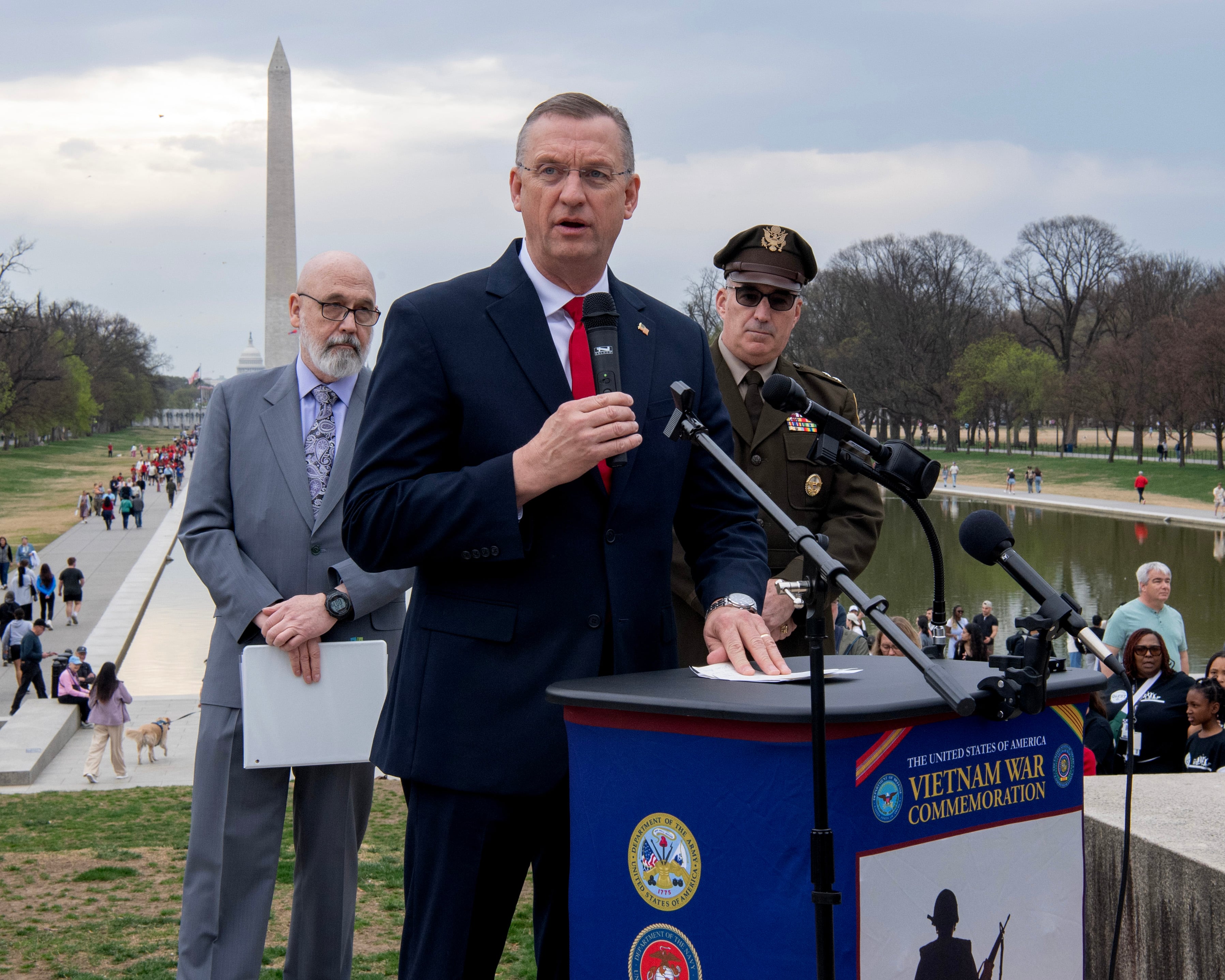For troops deployed in the desert who wish they could conjure a cool glass of water, help is on the way.
Senior Master Sgt. Brent Kenney, a civil engineering superintendent with the 52nd Fighter Wing at Germany’s Spangdahlem Air Base, won the Air Force’s annual Spark Tank competition earlier this month by proposing a cheaper, lighter way to carry critical resources such as fuel and water to remote areas.
His offering, Project Arcwater, aims to make it easier and more environmentally friendly for the Air Force to conduct agile combat operations — the practice of dispatching small teams on flexible, unpredictable missions away from the comforts of a brick-and-mortar base.
“We can use these green technologies to really reduce that footprint that relies on fuel and water,” Kenney recently told Air Force Times, noting that he saw a single power plant burn 30,000 gallons of diesel a day while deployed to Iraq. “We can shrink that down, and make the power that we can harvest from the environment 10 times more effective.”
RELATED

Project Arcwater beat five other concepts in the finals of Spark Tank, a play on the popular angel-investing television show “Shark Tank.” That nabbed Kenney’s team $400,000 to build one system in a year, as well as a promise that the Air Force will assign Arcwater a program office that gives it structure and staying power.
The concept could shrink the price of a three-day, 30-person deployment from $40,000 to $600 by using up to 83% less fuel and eliminating the cost of water altogether, Kenney said in his Spark Tank pitch video. It’s also faster to set up than current systems, and helps free up about half of the pallet space on a C-130 Hercules transport plane.
“There are some up-front costs, but in just 20 missions, we can make that money back,” Kenney said in the video.
His idea arose out of disaster. In 2018, when Hurricane Michael destroyed Tyndall Air Force Base in Florida, Kenney’s unit in Georgia was among the first to respond.

The 53rd Air Traffic Control Squadron from Robins Air Force Base, a mobile airport of sorts, headed south to reopen Tyndall’s airfield and evacuate the F-22 Raptor fighter jets that hadn’t left before the Category 5 storm hit.
Kenney’s squadron brought their standard load of a couple barrels of diesel fuel, but it wasn’t enough.
“Everything was contaminated with saltwater, so our barrels didn’t last very long,” he said of Tyndall’s inability to power its own systems. “We ended up having to use a tractor-trailer and load it completely full of nothing but fuel, and drive it from middle Georgia all the way down there.”
Planning a humanitarian aid mission in the Bahamas raised a similar concern. Kenney said his unit anticipated needing to bring 30 days’ worth of water and fuel because they wouldn’t receive fresh supplies.
Those events sparked a question: How can the Air Force shrink what it needs to carry on the go?
Kenney discovered Pvilion, a New York-based company that sells solar power-generating fabric, through the Air Force technology innovation group AFWERX. They got to work creating the electrical piece of Project Arcwater under a Small Business Innovation Research grant.
RELATED

At its best, the solar power component can provide slightly more energy than it takes to run an average American home, and about double what Spangdahlem believes agile combat operations requires, Kenney said.
The system comes with batteries in case bad weather prevents the photovoltaic fabric from collecting enough energy to power the site, and a small generator that automatically turns on in emergencies and can recharge the system within a few hours.
That first product went to Robins, but Kenney moved to Spangdahlem before he could see it come to fruition. In Germany, he again sought military research grant funding to build another system for use at Spangdahlem.
AFWERX connected Kenney with Gyrene, a California-based company that harvests water out of thin air, but his request for a grant to get the project off the ground was never approved. After about a year in limbo (where the application remained as of March 11), Kenney turned to his local leaders instead.
The water harvester box can pump out dihydrogen monoxide using two methods: it can suck up and purify moisture in the air to produce as much as 30 gallons of water per day; or it can filter freshwater and saltwater that airmen find while deployed, filling its 20-gallon tank in 10 minutes.
RELATED

This technology replaces a pallet of water bottles every six days, Kenney said.
Even in arid climates like in North Africa and the Middle East, the system can generate around 10 gallons of water, Kenney said, adding that it’s easiest to pull moisture from the atmosphere overnight there.
The contraption runs on internal power that lasts five days without charging while processing humidity into potable water, to as long as 14 days when purifying natural water from a pond or ocean.
“In the event that you are in a pinch and you really need to keep power on, you can plug the water harvester [into the generator] and it will actually use the onboard power from the water harvester to recharge the system,” Kenney added.
Older heating and cooling systems can weigh as much as 600 pounds and need a forklift to move around. The HVAC system on Arcwater’s solar component weighs in at 175 pounds and can be carried by two people, Kenney said.
Officials in the 52nd Fighter Wing approved of the idea and offered their discretionary funds to move it forward. The water system costs $87,000 per unit, while the solar setup runs about $232,000.
In contrast, the Air Force said in 2019 it spends about $1.1 billion annually to power facilities and vehicles (plus about $7 billion a year in aviation fuel). And though it’s unclear what the military currently spends on sending water to the field, the Pentagon said in 2003 it cost $4.69 per gallon to deliver bottled water to troops in Afghanistan — or about $750,000 to hydrate 1,000 people for a month.
Kenney said he expected to have a prototype by mid-May that pairs together the photovoltaic fabric and the water harvester. The finished product with any needed changes should be available in the fall.
He plans to take Arcwater to three field exercises in the next few months to see how it performs in the real world.
“We can put wear and tear on it, and then we have the opportunity to go back to the company and say, ‘Hey, I don’t like this. I want to move this knob from over here to over there, and that button is in a really inconvenient spot,’” he said.
RELATED

Arcwater has already helped power a five-hour operation known as “Shadow Watch” for the Defense Threat Reduction Agency, an organization tasked with countering weapons of mass destruction, Kenney said. The system was able to provide nearly four hours of electricity using the solar fabric and batteries, even while it snowed.
Spangdahlem has also used Arcwater to turn sewage treated at its wastewater plant into drinkable water, and the system can function as a universal adapter to get potable water from almost any European fire hydrant.
Kenney suggested the creation could prove useful for organizations like the Department of Homeland Security, Federal Emergency Management Agency and the U.S. Agency for International Development.
Tech. Sgt. Matthew Connolly, the 52nd Fighter Wing’s innovation manager, added that the German government is interested in piggybacking off of or duplicating Spangdahlem’s efforts as well.
RELATED

In addition to furthering the conversation about how green technology can help the military, Kenney argues that Arcwater should spur the Air Force to think more about how its needs for agile combat employment will differ around the world.
“[Pacific Air Forces] has a huge ACE footprint, but it looks totally different than what we do in [U.S. Air Forces in Europe]. They’re going to be island-hopping,” he said. “How do we help them use this concept?”
He’d like to have those discussions by midsummer, then expand his horizons to other military branches and agencies outside of the Pentagon by the end of 2022.
“Whether we can go that fast, I don’t know,” he said. “But I keep leaning forward to help other people solve these same problems.”
Rachel Cohen is the editor of Air Force Times. She joined the publication as its senior reporter in March 2021. Her work has appeared in the Washington Post, the Frederick News-Post (Md.), Air and Space Forces Magazine, Inside Defense, Inside Health Policy and elsewhere.




